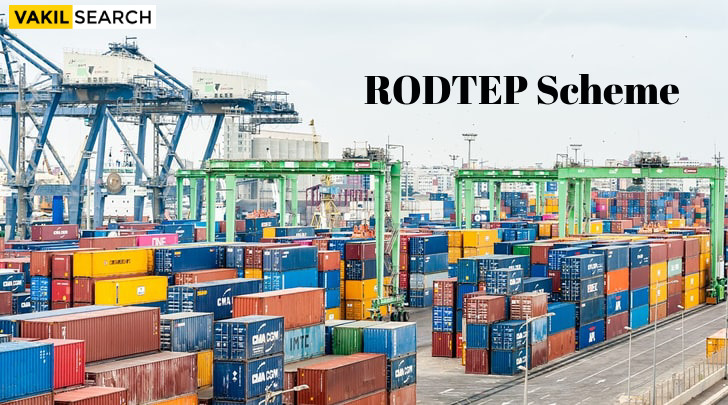The Remission of Duties and Taxes on Exported Products (RoDTEP) Scheme is a game-changer in India's export promotion strategy. In this extensive blog, we will explore every facet of the RoDTEP Scheme. From its key features to its importance in India's economic landscape and a detailed list of industries ineligible for RoDTEP benefits, this guide will leave no stone unturned.
Introduction
Export promotion has always been a priority for India’s economic growth, and the RoDTEP Scheme stands as a testament to this commitment. This blog aims to provide a deep understanding of this scheme, highlighting its critical aspects and implications.
Features of the RoDTEP Scheme
Unpacking the Scheme
The RoDTEP Scheme, or the Remission of Duties and Taxes on Exported Products, represents a significant shift in India’s export promotion strategy. It was introduced to address the shortcomings of its predecessor, the Merchandise Exports from India Scheme (MEIS), which had come under scrutiny from the World Trade Organization (WTO) for not complying with global trade regulations.
One of the key features of the RoDTEP Scheme is its methodology for calculating incentives. Unlike MEIS, which relied on a product-specific basis, RoDTEP adopts a more nuanced approach. It considers the embedded taxes and duties at various stages of production and export, ensuring that exporters are adequately compensated for these expenses. This feature has been warmly welcomed by businesses, as it offers a more equitable and transparent incentive structure.
Another crucial aspect of RoDTEP is its timeline. It was rolled out in phases, with the intention of covering all eligible sectors gradually. This phased implementation allowed the government to fine-tune the scheme’s mechanics and assess its impact on different industries. As of [current year], RoDTEP has already encompassed a wide array of goods, with plans for further expansion.
The RoDTEP Scheme also addresses the issue of ‘inverted duty structures,’ which had been a stumbling block for certain industries. Inverted duty structures occur when the taxes paid on inputs are higher than those on the finished products. RoDTEP refunds these embedded taxes and duties, rectifying this anomaly and promoting efficiency in production.
The Nuts and Bolts
To understand the RoDTEP Scheme fully, it’s essential to dive into its technical details. At its core, RoDTEP operates on the principle of refunding duties and taxes at various stages of production and export. This mechanism helps exporters recoup the expenses they incur during the manufacturing and export process.
RoDTEP’s operational framework involves the calculation of duties and taxes incurred at each stage, including manufacturing, distribution, and transportation. These calculations are based on the product’s customs value, ensuring that the refund accurately reflects the costs incurred by the exporter.
Additionally, RoDTEP integrates seamlessly with the GST (Goods and Services Tax) regime. This ensures that exporters can claim refunds efficiently and transparently. The coordination between RoDTEP and GST simplifies the administrative burden on businesses and reduces the scope for disputes.
Benefits for Exporters
The RoDTEP Scheme offers a plethora of benefits to exporters, enhancing their competitiveness on the global stage. One of the most significant advantages is the reduction in the overall cost of production. By refunding the embedded taxes and duties, RoDTEP lowers the cost burden on exporters, allowing them to offer competitive prices in international markets.
Moreover, RoDTEP incentivizes exports across sectors, not favoring any particular industry. This inclusive approach promotes diversity in India’s export portfolio, reducing dependence on a few sectors. It also encourages businesses to explore new markets and opportunities.
In terms of financial gains, RoDTEP provides much-needed liquidity to exporters. The timely refunds of duties and taxes ease the cash flow constraints often faced by businesses engaged in international trade. This liquidity injection can be channeled into various aspects of the business, from research and development to expanding production capacities.
In conclusion, RoDTEP is a multifaceted scheme that caters to the needs of exporters across sectors. It not only lowers production costs but also stimulates innovation and market diversification, positioning India as a formidable player in the global export arena.
Boosting India’s Exports
India’s economic growth has long been intertwined with its ability to boost exports. The RoDTEP Scheme plays a pivotal role in this endeavor, offering a substantial boost to the country’s export capabilities.
One of the most prominent ways RoDTEP fuels export growth is by enhancing the competitiveness of Indian products in international markets. By refunding embedded taxes and duties, it effectively lowers the cost of Indian goods, making them more attractive to foreign buyers. This competitive pricing is a significant driver behind the surge in India’s exports across various sectors.
Furthermore, RoDTEP helps bridge the gap between the domestic and international markets. It creates a level playing field for Indian exporters, allowing them to compete with global counterparts on equal terms. This not only benefits large corporations but also empowers smaller businesses and artisans to access international markets.
Promoting ‘Make in India’
RoDTEP aligns seamlessly with the ‘Make in India’ initiative, a flagship campaign aimed at promoting domestic manufacturing and increasing value addition. By incentivizing exports, RoDTEP encourages businesses to produce and export goods from India. This, in turn, fosters domestic manufacturing, as companies seek to capitalize on the scheme’s benefits.
One of the key objectives of ‘Make in India’ is to reduce India’s reliance on imports. RoDTEP contributes significantly to achieving this goal by stimulating domestic production and making Indian goods more competitive in international markets. This encourages businesses to source inputs locally, further strengthening India’s manufacturing ecosystem.
Fostering International Trade Relations
Internationally, the RoDTEP Scheme has been received with interest and curiosity. Its impact on India’s trade relations with other nations is substantial. By promoting exports and creating a favorable environment for international trade, RoDTEP positions India as an attractive partner in global trade agreements.
India’s participation in trade pacts, such as the Regional Comprehensive Economic Partnership (RCEP) and Free Trade Agreements (FTAs), has been bolstered by the RoDTEP Scheme. It demonstrates India’s commitment to being a reliable trade partner, offering competitive products and services.
This scheme also acts as a diplomatic tool, facilitating negotiations and discussions with trading partners. It showcases India’s dedication to adhering to international trade norms and regulations, promoting transparency and fairness in global trade practices.
Exclusions and Limitations
While the RoDTEP Scheme offers a wide array of benefits, it’s not all-encompassing. Certain industries and products are ineligible for RoDTEP incentives. These exclusions are primarily aimed at preventing misuse of the scheme and ensuring that it benefits the intended recipients.
The list of industries not eligible for RoDTEP includes some sectors that are considered to be export-oriented but face restrictions due to international commitments and trade agreements. Additionally, industries that already benefit from other government incentives may not be eligible for RoDTEP to prevent double-dipping.
For example, the automobile and steel industries, which enjoy significant government support through other schemes, may not qualify for RoDTEP benefits. The government carefully reviews these exclusions to strike a balance between promoting exports and maintaining fiscal discipline.
Mitigating Challenges
For industries that do not qualify for RoDTEP incentives, alternative strategies become crucial. These sectors must explore avenues to remain competitive and thrive in the evolving export landscape of India.
One approach is to focus on value addition. By adding value to their products through innovation, design, or customisation, industries can differentiate themselves in the global market. This strategy can help compensate for the lack of RoDTEP benefits.
Collaboration and international partnerships are another viable route. Businesses can seek alliances with entities in countries that do not face similar export restrictions, allowing them to tap into those markets indirectly
Conclusion
The RoDTEP Scheme is a transformative step towards making India a global export powerhouse. In this concluding chapter, we’ll summarize the key takeaways and emphasize the scheme’s long-term implications for the Indian economy.
India’s RoDTEP Scheme is a dynamic and evolving initiative that demands attention from businesses, policymakers, and stakeholders alike. With its potential to reshape the export landscape, understanding its nuances is essential for anyone involved in international trade. This blog has strived to be a comprehensive resource, offering insights into RoDTEP’s features, significance, and limitations, equipping you to navigate the complex world of Indian export policy with confidence.









